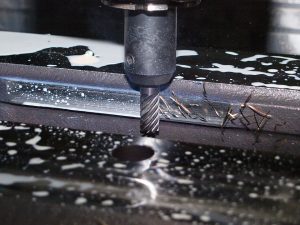
Boring is a common process used in the manufacturing industry. Not to be confused with drilling, it involves the use of a cutting tool or bit to enlarge an existing hole in a workpiece. While some boring processes require multiple passes of the respective cutting tool or bit, others only require a single pass.
Known as single-pass boring, it’s often performed using a milling machine. Milling machines support a variety of cutting tools, including the diamond-tipped cutting tools used in single-pass boring. The workpiece is secured to the milling machine, after which it’s exposed to a rotating cutting diamond-tipped cutting tool. Other single-pass boring processes are performed using a bore finishing machine. Single-pass boring offers both advantages and disadvantages, however, some of which are described below.
Pros of Single-Pass Boring
Because it uses a diamond-tipped cutting tool, single-bass boring doesn’t require frequent changing of the cutting tool. The diamond-tipped cutting tools used in this boring process can last for years. In comparison, cutting tools used in multi-pass and other boring processes often require frequent changing. They may become dull, or they may even break. Regardless, other boring passes require more frequent changing of the cutting tool.
Another benefit of single-pass boring is its ability to quickly and effectively enlarge holes. All boring processes can enlarge an existing hole. After all, that’s how they are distinguished from drilling processes. SIngle-pass boring is more effective, though, because it uses a diamond-tipped cutting tool that requires just a single pass.
Single-pass boring also supports the use of many different materials. Whether a workpiece is made of steel, aluminum, chrome, ceramics or plastic, it can be manipulated using this boring process. Single-pass boring can enlarge holes in most workpieces, regardless of the material from which they are made.
Cons of Single-Pass Boring
On the other hand, single-pass boring is a poor choice for enlarging blind holes. If you look at the diamond-tipped cutting tool used for single-pass boring, you’ll notice that it tapers towards the bottom. As a result, the cutting tool may not pass all the way through the workpiece’s hole. Single-pass boring can work on blind holes, though it requires the use of a specialized cutting tool that doesn’t feature a tapered end.
In Conclusion
Single-pass boring is a machining process that involves the use of a diamond-tipped cutting tool to enlarge a hole in a workpiece. It differs from other boring process by only passing the cutting tool through the workpiece’s hole a single time.
